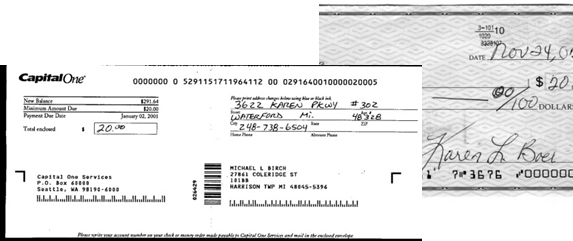According to the recent AIIM research “Shedding Light on the Dark Data in your Document Capture Processes,” the use of OCR, OMR and barcode recognition is the highest level of recognition technology achieved by nearly 80% of survey respondents. While 22% are using some type of handwriting recognition, it is mostly constrained hand print in combs or boxes. Only 4% are recognizing unconstrained handwriting.
This is not surprising. Even with an estimated ROI within 18 months or less, a lot of businesses are hesitant to invest in this proven technology.
Here are some of the common myths, and why we need to stop believing them.
Myth #1: All ICR is the same
It is a common myth in the industry that all ICR is the same. Not only from a technology point of view, but also the types of data that ICR can handle. There are big differences between constrained hand print, unconstrained hand print, handwriting resembling cursive but non-connected, or real cursive writing. There is a lot to consider when addressing not only the type of information on a document but also the format in which it is supplied.


Myth #2: ICR doesn’t work well
This myth is based on technology available 10 years ago. Certainly there are many anecdotes of ICR uses that resulted in less-than stellar results. However, with the proper set-up, ICR can be amazingly accurate. For instance, when applying ICR to financial deposit-based information, accuracy rates can be in the mid-to-upper 80% and even higher while error rates are very low, say below 2%. So this is clearly a case of bad news spreading better than good news.
ICR, depending on the application, can have 85%-95% read rates with low accompanying error rates.

Myth #3: ICR requires constraint
By constraint, we are talking about boxes or combs or any other type used to separate the letters. Essentially that handprint or cursive have very strict controls for how a person writes the information in order to achieve positive results. While constraint is certainly ideal, it is not always practical and even the best-designed forms cannot control user data entry completely. How well an ICR technology performs under a variety of situations, whether highly constrained or little constraint really depends on the techniques used.
Unconstrained applications where there is good supplemental information can achieve mid-90’s success rates at high throughput.


Myth #4: ICR includes cursive
Hopefully no one markets their ICR capabilities to include cursive. While hand print and cursive are both the products of a human, the ability to successfully translate each into machine-readable output is based upon significant differences in technique in practice.
Most ICR technologies do NOT provide capabilities where handwriting or cursive is involved.
Are there any other myths you’d like to see busted? Tell us!

